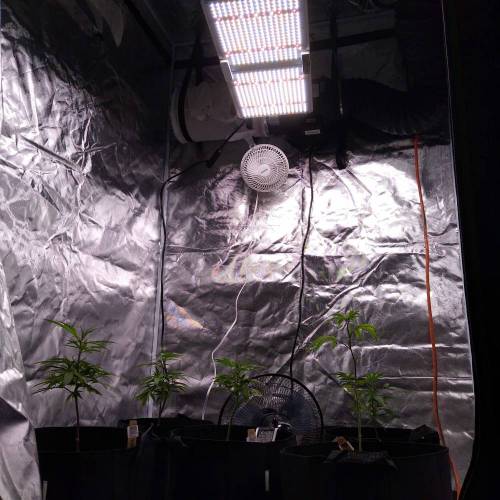By continuing to use the website or clicking Accept you consent to our cookies and personal data policy and confirm that you are at least 18 year old. For details please see Privacy Policy and Terms
Accept
Taquitz dosido knights templar

Taquitz

Knigh

Dosido

VEG
Maxi Light Emitting Diodes/200W
Maxi

FLO
Maxi Light Emitting Diodes/200W
Maxi
Soil
Custom
Indoor
Room Type
19 liters
Pot Size
2
Week 2. Vegetation5y ago
30.48 cm
Height
18.93 liters
Pot Size
78.74 cm
Lamp Distance
Nutrients 3
Calmag
1.5 mll

Grow Big
1.302 mll

Big Bloom
3.906 mll
Smokestack925 —
1 like
comments
Share
Grow Questions
Smokestack925started grow question 5y ago
It's my first grow and I'm unsure about the light distance. Started at 24" when I brought the clones home. Have since raised it to 31" is that too high?
Open
Leaves. Edges burnt
Leaves. Tips - Burnt
Leaves. Veins - stay green
likes
Answer
RafaelRapidosanswered grow question 5y ago
Hello Smokestack925,
Take a look at how your plants react with the current lamp height. If they start to stretch, the lamp is too far away. If the leaves starts to point up (aka praying), they are too close.
Good luck with your project, I wish you all the best! 👽
likes
Complain
NobodysBudsanswered grow question 5y ago
I'd start at 18" with a quantum board. Those are samsung lm301 diodes? if so, definitely start there.
Height will control coverage area. Usually when i look at these QB PAR coverage maps (PAR readings averaged per m^2 = PPFD), they typically are great at 18". At 12" they tend to have a massive hotspot directly under the boards that is too intense for most plants.
This will be trial and error. A light meter can help. When you see a bad reaction to too much light you can measure and know to stay below that... when it stretches too much, you can measure and stay above that... after a little back and forth you'll find an optimal height / dim to your lights.
best case, you allow height to dictate area of coverage... after that dim the light based on plant's behaviour, if needed. So, raise it until it is fairly intense even at the edges of where plant canopies will exist.
i don't know if that's one frame, but if you can space them out, it might provide a better blanket. I wouldn't worry too much if not. QBs are a great option.
again, a PAR meter is invalueable, but expensive. a cheap light meter (lux/lumen) can inform you about intensity, but not give you a PAR value. Relative intensity can do all the same thngs i mentioned above. When you find a max lux it can handle, that'll remain consistent relative to genetics of the plants grown. That'll always be a good ballpark to start. However, lux values will only be good under the same light... you'll need a different 'max value' if measuring a different light. spectrum impacts lux values, as long as you stay under same light spectrum, it is a consistent measurement. e.g. if you buy a different light, you'll have to learn min/max values per light.
likes
Complain
Shagrathanswered grow question 5y ago
Hi!
31" might be a bit high for that lamp, but you will see soon enough how the plants grow. If they seem to stretch a lot it means it's too far away.
But I would suggest maybe 20-24" distance between the light and canopy and maybe add fan between them to keep the air cooler so you wont burn the plants
likes
Complain
Enjoying this diary? Follow for more updates!
Prefer the old Diary view?
Go back to the old Diary view













